基于安卓Android的车间管家APP系统的设计(AndroidStudio)
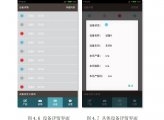
基于安卓Android的车间管家APP系统的设计(AndroidStudio)(任务书,开题报告,论文15000字,程序代码)
摘要
随着移动互联网的迅速发展,当代企业业务和移动互联网的结合势在必行。由于移动设备中,Android设备占比巨大。因此把对企业的服务基于Android的形式呈现具有很大的优势,适用范围十分广泛。调查发现,大部分工厂负责人要想了解工厂车间的具体情况,都需要亲自到工厂车间或者联系具体的车间管理人员才能掌握这些信息,而这之间又存在信息传递不对称的问题。在当下社会中,信息的同步对工厂的发展来说相当重要,决定了工厂发展的未来方向。本文介绍的车间管家系统对工厂负责人、车间管理员等角色来说,方便了信息的获取和查看,可以大幅提高公司效率,使公司在社会的快速发展中更有竞争力。
本文主要对基于Android的车间管家系统进行了介绍。首先对基于Android的车间管家系统进行了整体的介绍,然后对系统进行了需求分析,设计,代码编写和测试的介绍,最后结合Android系统源代码,对设计模式进行了探索。
关键词:车间管家;Android;移动设备;设计模式
Abstract
With the rapid development of mobile Internet, mobile Internet and modern enterprise business combination is imperative. Because Android devices accounted for huge in the mobile devices, the Android-based enterprise services presented in the form of great advantage, and the scope of services is very extensive. The survey found that most of the people in charge of the factory in order to master the factory info, they need to personally contact the factoryor the specific management workshop to grasp such information, and the problem of asymmetric information exists. In contemporary society, the information on the synchronization of development of the factory is quite important to determine the future direction of development of the plant. This thesis describes the workshop manager system, which meaning for the workshop manager is to facilitate the access to information and viewing, it can significantly improve the efficiency of the company, make the company more competitive in the rapid development of society.
[资料来源:http://Doc163.com]
This thesis introduces the Android-based workshop manager. First, it introduces the outline of the workshop manager based on Android, then the system needs analysis, UI design and framework design, coding and testing. Finally combine the Android system source code, it discusses the design patterns.
Keywords: Workshop Manager; Android; Mobile devices; Design pattern
[来源:http://Doc163.com]
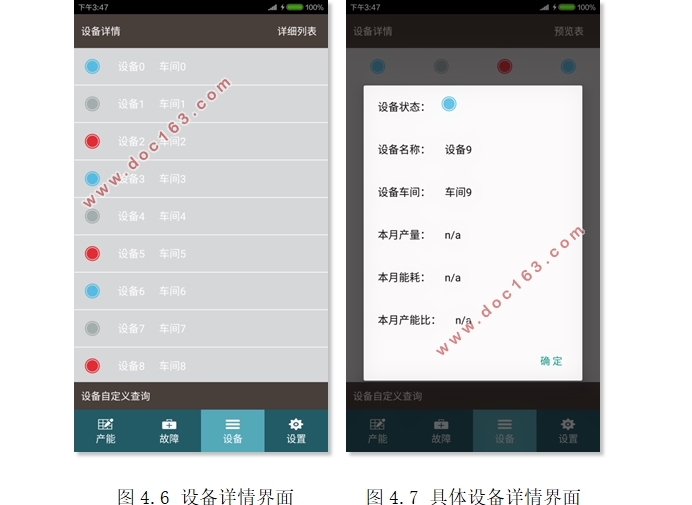
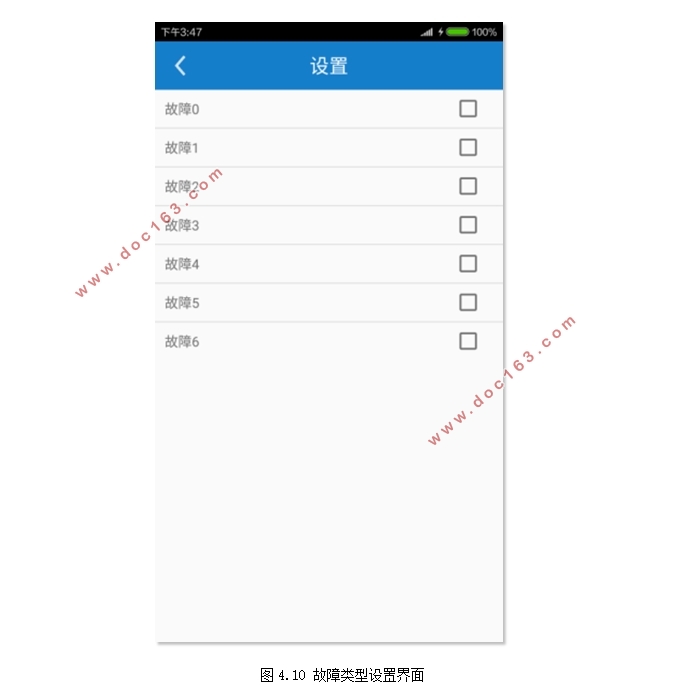
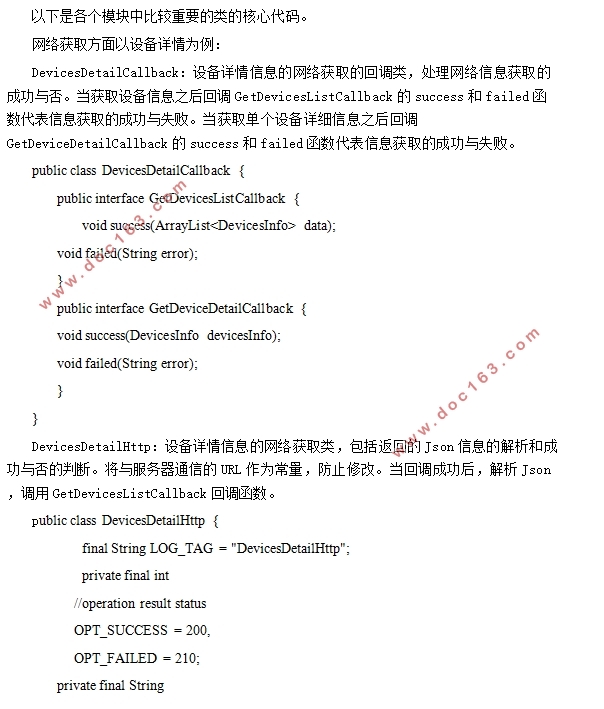
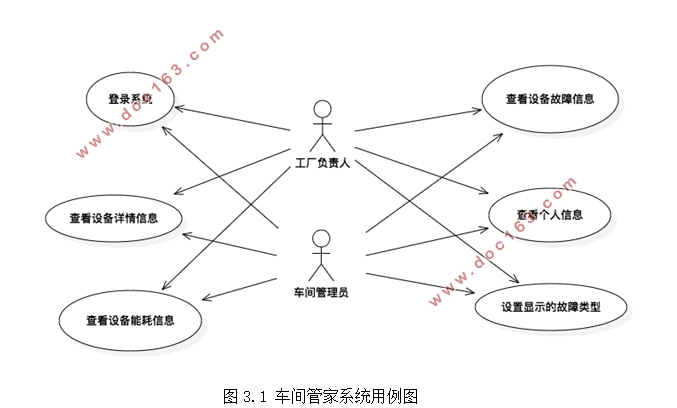
目录
第1章 绪论 1
第2章 车间管家系统简介 2
第3章 系统需求 3
3.1 用户角度的系统需求 3
3.2 细化用户需求 3
3.3 开发角度的系统需求 4
3.3.1 产品功能 4
3.3.2 系统运行环境 5
3.3.3 系统设计和实现的限制 5
3.4 外部接口需求 5
3.4.1 用户界面 5
3.4.2 硬件接口 6
3.4.3 软件接口 6
3.4.4 通信接口 6
3.5 功能需求 6
3.6 其他非功能需求 7
3.6.1 性能需求 7
3.6.2 安全性需求 7
3.6.3 软件质量属性 7
3.6.4 业务规则 7
第4章 系统设计 8
4.1界面设计 9
4.2包和类的设计 14
4.3数据库设计 18
4.3.1数据库ER图 18 [资料来源:http://www.doc163.com]
4.3.2数据库表结构 18
第5章 系统实现 22
5.1代码规范的重要性及其准则 22
5.2 各模块核心代码及其功能 23
5.3 在车间管家系统中对Android设计模式的探索 27
第6章 系统测试 31
6.1 登录模块测试 31
6.1.1 UI测试 31
6.1.2 单项测试 32
6.2 系统核心模块测试 32
6.2.1 UI测试 32
6.2.2 单项测试 32
6.3 问题及处理 33
6.3.1问题报告清单 33
6.3.2 问题处理 33
第7章 总结与展望 35
7.1 总结 35
7.2 系统的展望 35
致谢 36
参考文献 37 [版权所有:http://DOC163.com]
上一篇:基于安卓Android的定制广告推送系统商户端App的设计
下一篇:基于安卓Android的教学考勤系统APP设计(MyEclipse,MySQL)
